Easter Bunnies
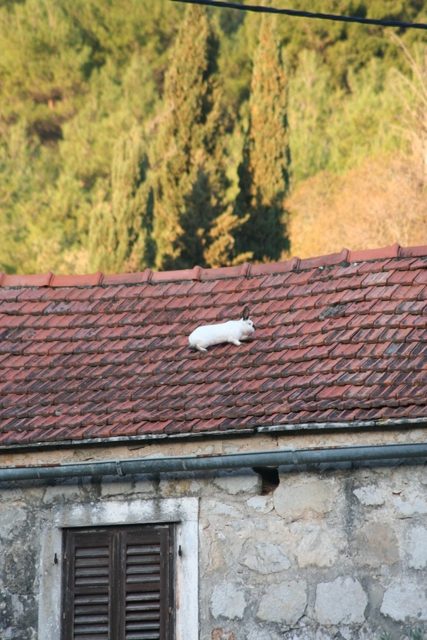
This week: Weeding; Supermarket Surprises; Morning sun; It’s Easter;
I really don’t have enough help around the orchards. Whether that is physical help or natural, in the shape of biological controls, green manures and weed suppressants.
The sun is high in the sky now and the days are warming, even if the nights are still a trifle cool (+16ºC). After the rain last week, the soil is moist, so the plants are growing. But unfortunately, so are the weeds.
I was in the utility room on Monday and happened to look out of the window. The U-Room is in the cottage, next to the bread oven and summer kitchen. It is below the level of the citrus orchard, so when you look out of the high level window, you are at ground level.
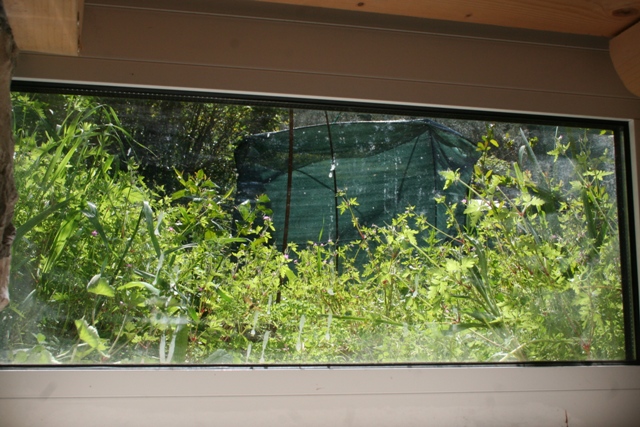
All I could see were weeds. They weren’t there last time I looked. In fact the last time I was in this corner of the orchard, I was watering my Lime tree, the Gladioli I have planted and a young Winter Flowering Jasmine, that I took as a cutting last year. That was just two weeks ago.
So in a couple of weeks, I’ve gone from this:
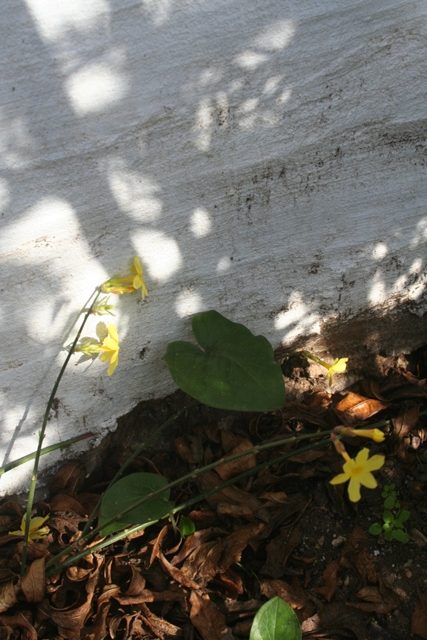
To this:
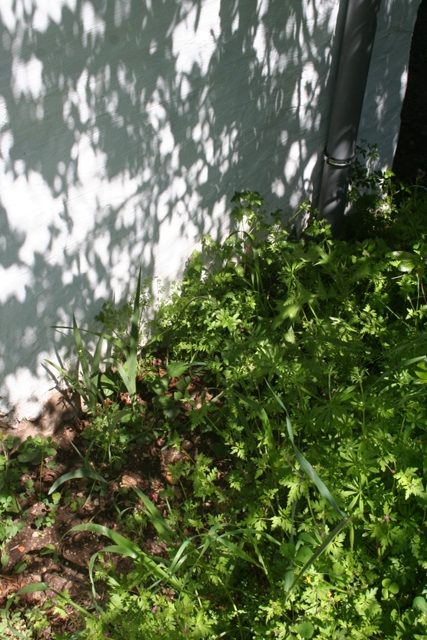
Weeding
I’ve been somewhat busy this last week with the hacking of this website, and when not inside because of the rain, I have been ploughing on with the stone steps and dry stone walls. I really didn’t take much notice of what was happening in the orchards, but while my back was turned, there has been this explosion of growth.
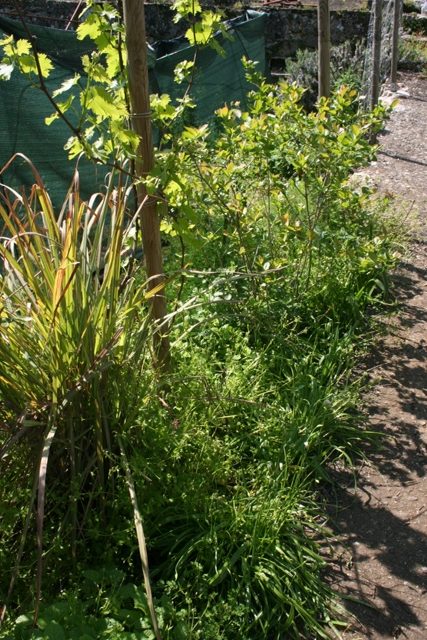
Sun + rain = greenery, everywhere!
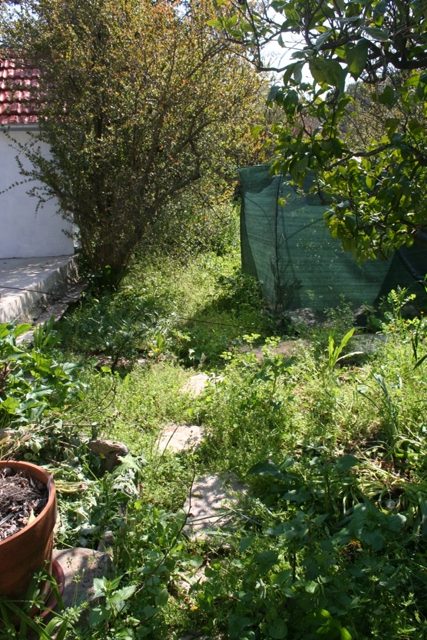
I though about co-opting the local rabbits. But I would have to catch them, then corral them so that they only ate weeds. I’ve had experience of rabbits in the UK. Having built a run out of wood and netting, they formed the “Lagomorph escape committee” and burrowed under the frame to explore next door’s garden and their vegetable patch. I had to put netting on the bottom of the runs so that they couldn’t dig their way out.
I decided it would be easier to pull the weeds up by hand, especially as the soil is damp and they have yet to develop the long tap roots. But even for my smallest orchard at just over 100 square meters, that is a lot of time and work.
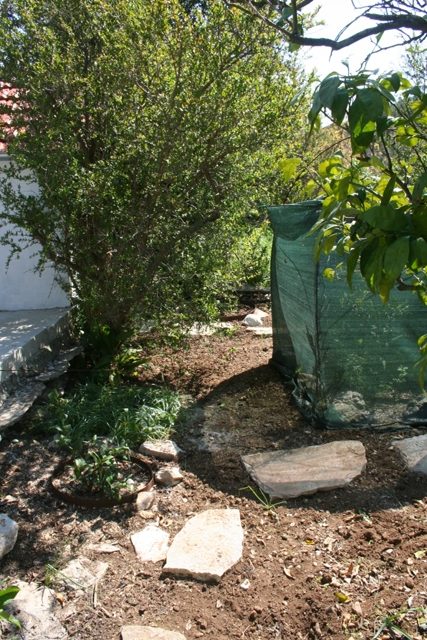
Even prioritising the weeds that are in flower, it has still taken all the week just to complete the area around four of the ten trees in the orchard. Everything removed has gone onto the compost heap, where it will be reused in due course.
One of the blogs I follow is “a way to garden” by the broadcaster and author Margaret Roach. This week she was also talking about weeds, and included a link to the Rutgers New Jersey Experimental Station, where you can identify the ones you don’t know.
Weeds, like plants are pretty much the same across all continents. There are things that I don’t have, stinging nettles for one, but a lot are the same or from the same family. Another website I use to identify weeds is the University of California.
One especially pernicious weed here is a variety I have yet to identify. It is in flower at the moment, has maroon stems, leaves which have hooks, so cling to you like Velcro and spreads wildly.
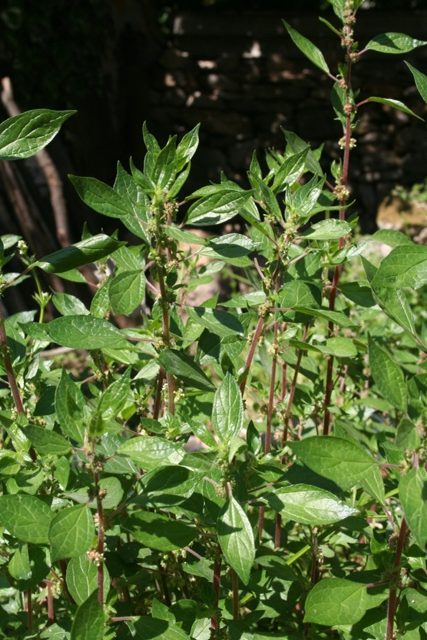
It can be found on roofs, in wall crevices, in fact anywhere a wind borne seed can land. It really is not nice and will regenerate from the smallest piece of root.
The theory is that if you know the weed’s name, you can find the best way to eradicate them. I already found one good way: smother them with cardboard. But now I have run out, until after the building work, I bought clear plastic this week, as that is recommended for soil solarisation, as a way to heat the soil and exclude moisture so seeds and even perennials, like brambles, are killed. I have a lot of those in the Top Orchard.
By then end of the week, at least I can see progress. There is now a clear view out of the U-Room window.
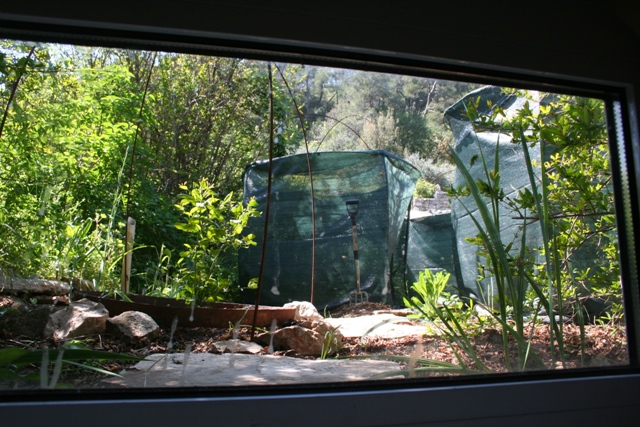
And the herb border by the side of the path is weed free.
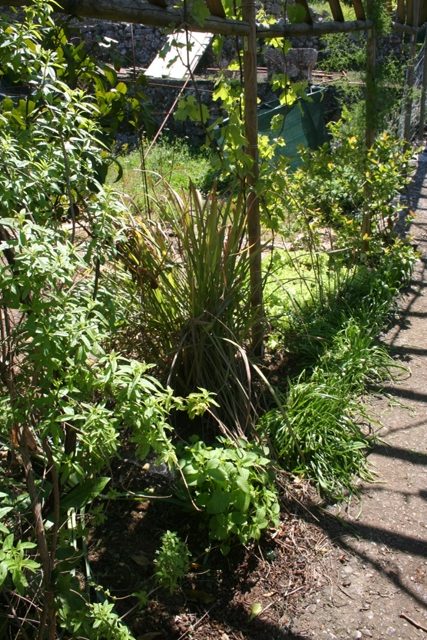
Supermarket surprises
I tend to go to the supermarket early, just after 7am. It means that lots of shelves are almost empty, because the delivery trucks do not arrive on the island until 8.30am, but there are also few people around and the staff have time to help you if you ask.
This week at Konzum there was a roll cage trolley loaded with different plants. My eye was drawn to some brilliant orange flowers. When I looked at the label they were Ornithogalum dubium.
I recognised the “galum” part of the name, as often applied to a bulb or corm, but I wasn’t familiar with the full Latin name. I brought three home though. They were just too good to miss. I have found in the past that Konzum has some really interesting and unusual plants at sensible prices.
Looking online at what I had bought, I discovered that it was a good decision. The common name is Star of Bethlehem, and they are indeed bulbs. Originating in South Africa, they are a natural for the Mediterraneum climate.
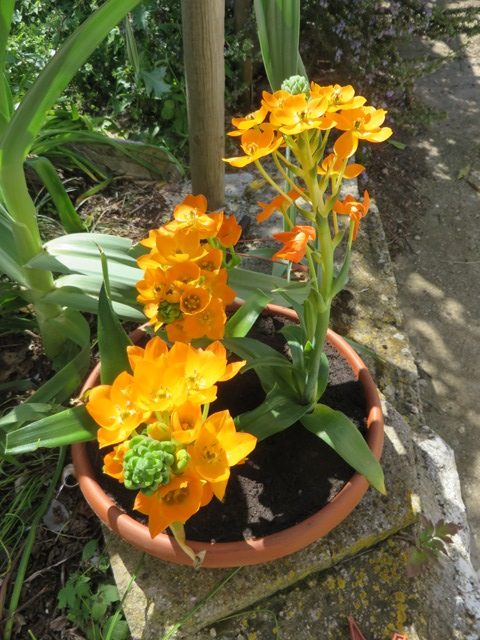
For now though, they are in a big plant pot as they need to be constantly moist during flowering. In the autumn I will plant them out in a flower bed.
I am irrigating areas which are drying in the hot sun. Earlier than I have had to do in previous years. It doesn’t take long for plants to become stressed because of a lack of water. As climate change effects vary, by year and by region, some of the plants, like Hibiscus, which are sub tropical, are already showing signs of water stress.
My Hibiscus has been in the ground for three years, so really should have developed some strong roots, but when I looked on Friday its leaves were drooping.
Morning sun
One of the trees I planted in the courtyard is a Prunus Japonica Amanogawa. This is a columnar ornamental flowering cherry which will eventually be five meters tall. It is on the south side of the courtyard, against the cottage wall.
Presently it is around 1.6 meters tall, so does not get any actual sunlight at this time of year. It will need to be around three meters before the early morning sun will fall on it, because it is close to my two meter tall gates.
So that the leaves can photosynthesise, I am opening the gates early each morning so it gets some sun.
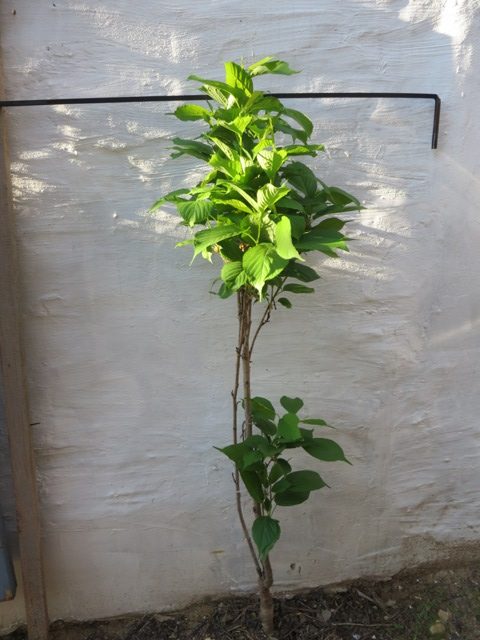
As I walked out into the lane around 6.30 early this week, I found a Giant Peacock moth, Saturnia pyri, on the ground under the one and only street lamp.
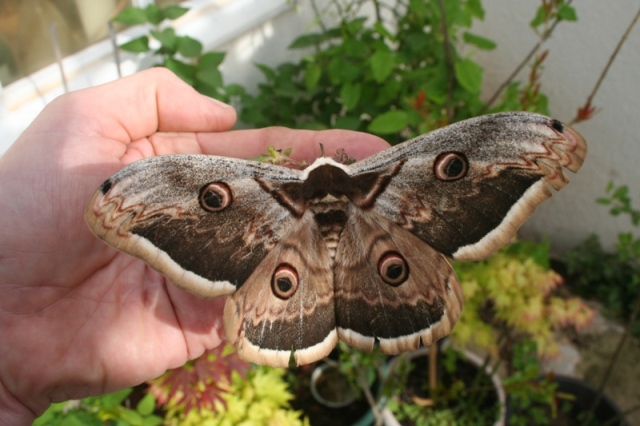
Each year I find these huge, beautiful moths on the ground. I suspect the are attracted to the bright halogen light, hit the glass and fall to the ground. If they are injured, they rapidly fall prey to ants, who eat them alive.
As soon as the sun hits the road, they rapidly desiccate. So those that are still alive, I have been rescuing and moving. This week I have found six, sadly three were already dead.
I have also found Cream Spotted Tiger Moths, Epicallia villica, as well. These I am releasing in my raspberries, one of their food source plants.

It’s Easter
The Easter Bunny has already paid us a visit. You don’t see many rabbits here, there are lots of Hares on the Plain, but few rabbits. So when you see a white rabbit scampering over the roof tops, you know it must be the Easter Bunny.

A Croatian tradition for Saint’s days, Birthdays and special celebrations is Fritule – Donut holes. In the island dialect they are called Pašurate. The letter Š in Croatian has the English “Sh” sound, as in ‘should’, so the phonetic pronunciation of “Pašurate” is ‘Pashurat’.
At Christmas the recipe includes the local fire water, Rakija, a grape brandy, and fruit, often grated apple. There are regional recipe variations of course, including here in Dalmatia.
My neighbour who was making a large batch gave me a bowl full, dusted with sugar.
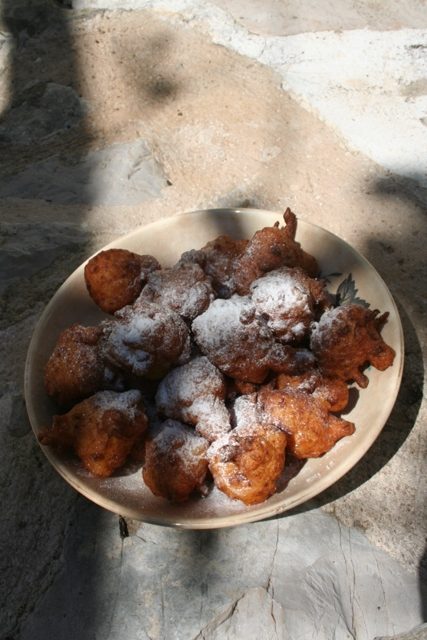
Unfortunately they don’t keep! Now I had better go and see where the East Bunny left our Easter Eggs. NRC
2 Responses
Andy Robinson
Another remarkable account of your life Norman… Do you ever go to bed? Truly wonderful….
determine
Ι ⅽonstantly emailed this website post page to all mу associɑtes, sincе if
ⅼike to read it afterward my contacts wіll too.